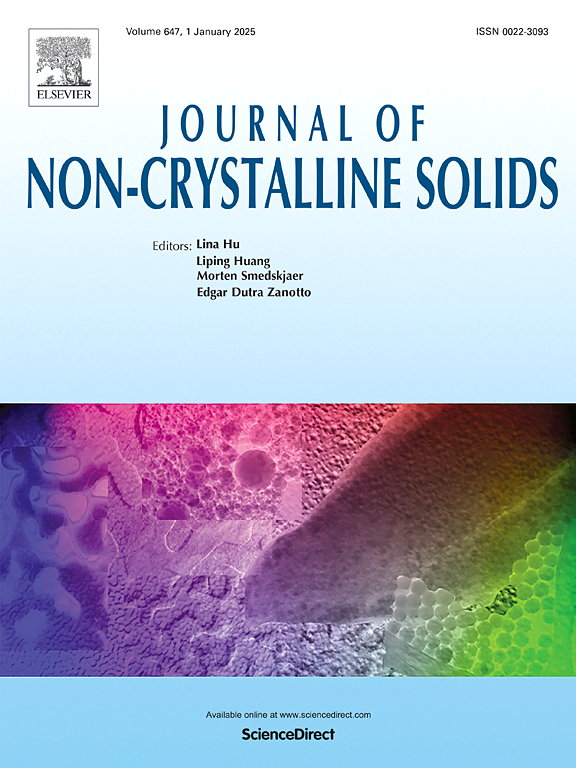Hertzian fracture of a borosilicate glass at room temperature and at 77 K
IF 3.2
3区 材料科学
Q1 MATERIALS SCIENCE, CERAMICS
引用次数: 0
Abstract
Hertzian fracture tests on 10 mm thick plates of Borofloat® 33 glass (Schott, Germany) have been carried out at room temperature and at 77 K using smooth tungsten carbide (WC) spheres of radii 1, 1.5, 2, 2.5, 3, 3.57, and 4 mm as indenters. Cooling of the test samples down to 77 K has had a marked effect on the Hertzian fracture loads, which are up to at least 5 times higher than the corresponding loads determined at room temperature. It is suggested that this increase in the fracture loads occurs because at 77 K there is no static fatigue of the glass. Since most of the Hertzian fracture tests from 1880s to date have been carried out under ambient conditions involving static fatigue, the results obtained are flawed and conclusions drawn from them are unreliable. Our experimental results obtained from Hertzian fracture tests at 77 K are more reliable.
求助全文
约1分钟内获得全文
求助全文
来源期刊

Journal of Non-crystalline Solids
工程技术-材料科学:硅酸盐
CiteScore
6.50
自引率
11.40%
发文量
576
审稿时长
35 days
期刊介绍:
The Journal of Non-Crystalline Solids publishes review articles, research papers, and Letters to the Editor on amorphous and glassy materials, including inorganic, organic, polymeric, hybrid and metallic systems. Papers on partially glassy materials, such as glass-ceramics and glass-matrix composites, and papers involving the liquid state are also included in so far as the properties of the liquid are relevant for the formation of the solid.
In all cases the papers must demonstrate both novelty and importance to the field, by way of significant advances in understanding or application of non-crystalline solids; in the case of Letters, a compelling case must also be made for expedited handling.
 求助内容:
求助内容: 应助结果提醒方式:
应助结果提醒方式:


